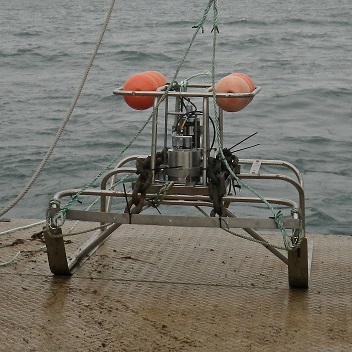Underwater footage from the Isle of Man's marine nature reserves is playing a key role in assessing the success of efforts to ensure long-term sustainable fishing and monitor biodiversity. Matthew Garratt, Fisheries Technician with DEFA, explains more:
The marine environment around the Isle of Man is a key part of our Biosphere, taking up 87% of Manx territory.
Around our coastline we have an incredible diversity of habitats and species, from kelp beds to horse mussel reefs, that are protected in a network of marine nature reserves.
As of 2018, we have 10 marine nature reserves covering 52% of the inshore territorial sea, which are closed to scallop dredging and trawling, allowing these areas to recover and potentially feed back into the fishery.
They also provide important areas for the recovery and protection of many other species, whose presence improves the overall quality of our marine environment, thereby contributing to sustainability.
Marine nature reserves are surveyed by DEFA and Bangor University using underwater cameras, providing us with a wealth of information on species distributions, scallop abundance and habitat types.
This information is key to the successful management of these areas, working towards tailored, zoned, management approaches, where appropriate, that combine conservation with the needs of the fishing industry to achieve sustainable fisheries into the future.
More than 1,000 photographs and hours of video footage have been analysed, with hundreds of species identified and important productive habitats such as maerl beds and seagrass meadows mapped.

Marine nature reserves are surveyed by DEFA using underwater cameras attached to a towable sledge
The longest-running marine nature reserve, Port Erin Bay, has been closed to scallop fishing since 1989 and its success is recognised worldwide. Although at 4.3 square kilometres this is one of the smallest closed areas that we have, it contains the highest density of king scallops in Manx waters and, possibly, in all of western Europe.
Since 1989, the average scallop density in the marine reserve has increased 30-fold. In one part of the reserve, we observed particularly high densities, about 90 times greater than what we see in commercial fishing grounds around the rest of the Isle of Man, highlighting the importance of closed areas in the protection of fisheries stocks.
The camera footage that has been collected in the marine nature reserves provides key data for fisheries management purposes as well as species records and habitat monitoring.
The undamaged habitats in these areas, promoting good scallop production, will continue to be monitored and protected in order to maximise the spill-over benefits into the fishery.
Successfully balancing conservation with industry will achieve a healthy Biosphere worthy of our UNESCO status.


